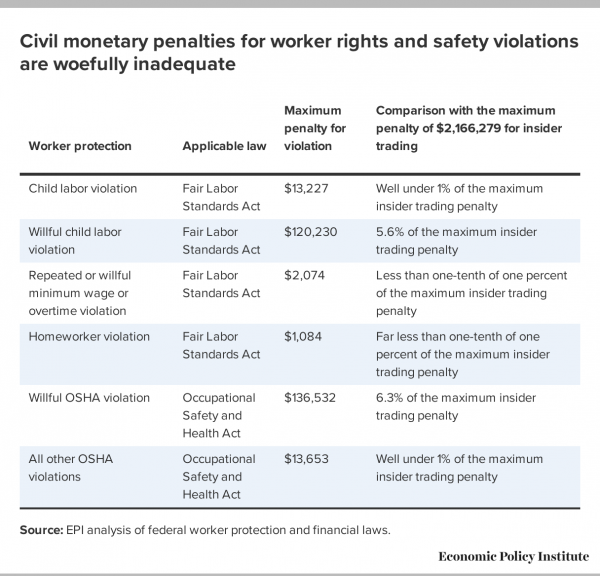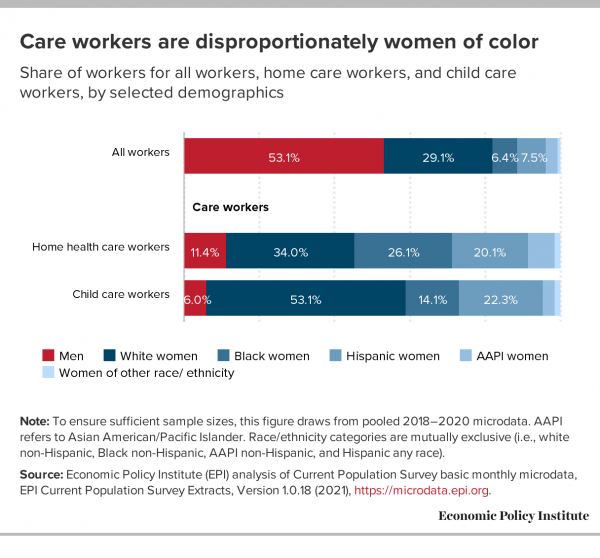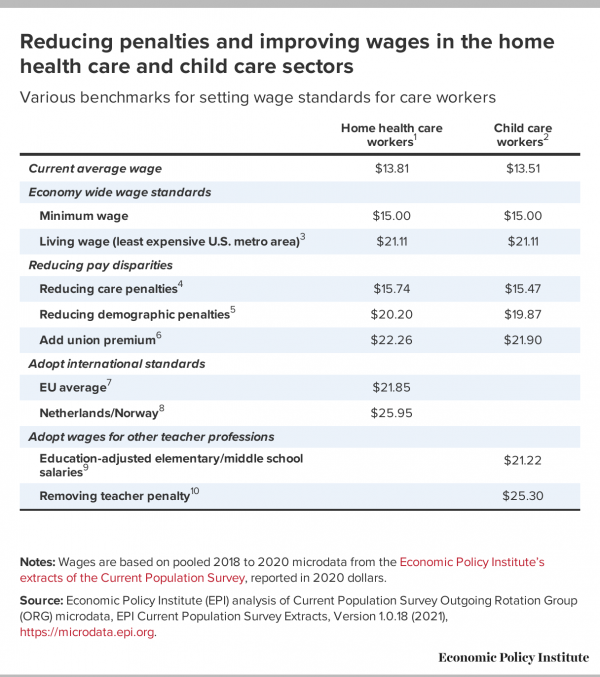https://www.epi.org/blog/civil-monetary-penalties-for-labor-violations-are-woefully-insufficient-to-protect-workers/
Key takeaways:
- Workers' rights and safety violations receive significantly lower fines than financial and corporate law violations. And in many cases, these violations involve no monetary penalty at all.
- Because workers' rights and safety violations result in such low financial penalties, these fines function as the cost of doing business rather than as deterrents.
- The ineffective nature of workers' rights enforcement often leads to repeated workers' rights and safety violations with little incentive for employers to improve conditions.
Civil monetary penalties—fines imposed when a law or regulation is violated—are enforcement tools. Agencies utilize them to enforce statutes and regulations, and the minimum and maximum civil penalties may be established administratively or by statute. By examining civil monetary penalties for violations of various key federal laws, we find a striking pattern: Workers' rights and safety violations are assigned a significantly lower penalty value than violations of other laws—characteristic of a system that unjustly undervalues workers. While employers and corporate officials face significant civil monetary penalties for breaking the law related to consumer finance, lobbying, and insider trading regulations, violations of fundamental labor and worker protection laws involve only minimal civil monetary penalties or even no monetary penalty at all.
The Department of Labor (DOL) enforces key worker protection statutes using civil monetary penalties. The maximum penalties range from $1,084 for recordkeeping and administrative violations to $136,532 for repeated safety violations. For example, DOL enforces the Occupational Safety and Health Act (OSHA), which protects workers from hazardous workplace environments. All non-willful OSHA violations, including violations which would likely lead to the death of an employee, have a maximum fine of just $13,653. Even a willful violation of OSHA, often issued for repeatedly leaving workers in physical danger, has a maximum penalty of $136,532.
A willful child labor violation under the Fair Labor Standards Act (FLSA), including a violation which leads to the death of a minor, incurs a civil monetary penalty of up to $120,230. All other standard child labor violations have a maximum penalty of $13,227. A repeated minimum wage or overtime violation is associated with a penalty of just $2,074.
While the civil monetary penalties included in worker protections statutes enforced by DOL are low, there are no civil monetary penalties for violating our fundamental labor law, the National Labor Relations Act (NLRA). The NLRA is enforced by the National Labor Relations Board (NLRB) and protects the right of workers to form unions and collectively bargain without retaliation from an employer. However, while the NLRB may in some cases recover back pay for employees who were illegally terminated, such as during a strike, they are unable to assess any civil monetary penalties.
Corporate and financial crimes involve significantly higher civil monetary penalties. These statutes are enforced by a variety of agencies, including the Securities and Exchange Commission (SEC) and Federal Trade Commission (FTC). The SEC enforces regulations surrounding insider trading with a large civil monetary penalty of up to $2.16 million. Similarly, a penalty imposed by the FTC for market manipulation or providing false information to a federal agency contains a maximum fine of $1.2 million. Comparable penalties for financial crimes, such as violations of the Consumer Financial Protection Act, also stretch well into the millions of dollars.
In nearly every case, the civil monetary penalties for financial crimes significantly exceed the fines for violations of worker protection statutes. The maximum penalty for a willful OSHA violation is just 6.3% of the maximum penalty for insider trading, while a maximum penalty for a standard OSHA violation is well below 1% of the maximum insider trading penalty. Similarly, a minimum wage or overtime violation under the FLSA is less than 0.1% of the insider trading penalty. Even a willful child labor violation makes up only 5.6% of this insider trading fine.
The penalties for violating workers' rights and safety laws are simply not high enough to demand compliance. In fact, a study from the Peterson Institute for International Economics finds that these FLSA fines are minuscule when "compared to the profits that can be earned through noncompliance." While we've referenced the maximum fines for labor violations above, this study maintains that only a "minority of investigations" under FLSA resulted in additional fines outside of worker back pay. The study finds that "only 11% of detected FLSA violations are considered repeat and/or willful, nearly half of these are not required to pay any civil monetary penalty, and, even when levied, typical penalties are relatively small (with only 13% of repeat and/or willful violators required to pay a penalty of more than $1 per dollar of back wages owed)."
Not only can the fine be too low to ensure compliance, but in the majority of cases, DOL doesn't impose a fine at all. The study concludes that a business would need to believe they have between a 78 and 88% chance of being found to be violating FLSA for it to be worth complying with the law. In reality, this chance is significantly lower given the deeply inadequate resources devoted to wage and hour investigations. This study suggests that the true chance of investigation "may be as low as 2%."
The ineffective nature of workers' rights enforcement often leads to repeated violations with little incentive for employers to improve conditions. For example, in the case of Hagel Metal Fabrication, OSHA issued a willful penalty for leaving employees exposed to laser cutting machines, which could have struck and crushed them, despite the obvious risks. Indeed, a 23-year-old worker was fatally crushed by such a machine, prompting the investigation that led to the penalty. However, after three willful violations and six serious citations, OSHA's fines for the company totaled only $317,000. Later, the fine was reduced to $200,000 in total, an average of only $22,222 per violation.
Further, OSHA itself notes that the violating employer had been issued 23 previous citations, including "willful and serious citations for exposing workers to dangerous conditions." Although the company incurred many previous OSHA violations, they continued to violate regulations without extensive fines to deter future violations, leading to these recent penalties and the company being placed on OSHA's Severe Violator Enforcement Program. The company abruptly closed in 2015.
As it stands, civil monetary penalties for financial crimes are significant and stretch into millions of dollars, while in many cases, employers who violate labor laws often still profit after small OSHA or FLSA fines. At the end of the day, these penalties for egregious, often inhumane labor violations aren't true deterrents—they simply represent the cost of doing business for these employers.

-- via my feedly newsfeed













